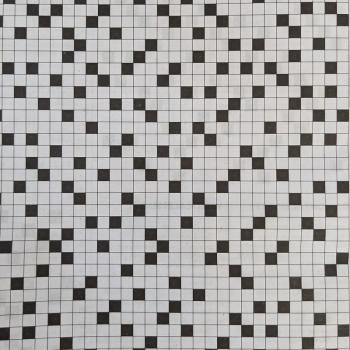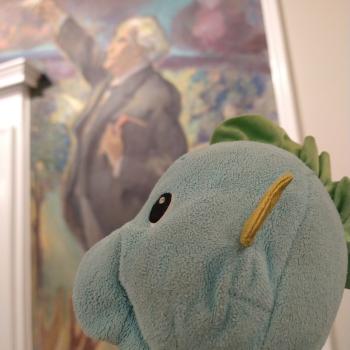
What follows is part of what ended up on the cutting-room floor when I handed in 6,000 words for a 3,500 feature on Christian thought about vocation in Leadership Journal. Since I still like it, I’m posting it here.
The Incarnation
Luther and other Reformers certainly did advance Christian reflection on work and calling. But if we turn again to the early and medieval church and look beyond the clerical and monastic usurpation of the term “vocation,” we will find some important theological resources for thinking about ordinary work—resources that Protestants today are in danger of losing entirely.
The appearance of Christ on the scene as a human being, with all the physical needs, skills, and temptations we all share, inserts a crucial principle into our thinking about work. The Incarnation meant that the church could not fall into the error of the Gnostics, calling the material world evil and thus leaving God out of consideration when we interact with the material world. In the second century such pastor-teachers as Irenaeus led the charge against this error, leading the church to reject Gnosticism as heresy.
Today we are in danger, not of viewing the material world as evil (most Western folk are little tempted to that error!), but of marginalizing our time-bound material existence as “non-spiritual.” We still value the work we do in the world, but we see in that work no spiritual dimension. On Sunday, we go to church to be spiritual. The rest of the week, we go to work in the world and largely shelve our spirituality. To see how this is related to the important truth of the Incarnation, we need only reflect on another early church heresy: Nestorianism.
The fifth-century bishop Nestorius, concerned by abuses in the cult of the Virgin Mary, began to teach (against church consensus both before and since) that Mary was the mother only of Jesus’ human nature—not his divine nature. This teaching resulted in a problematic view about how Jesus’ divine and human natures are related to each other. To be blunt: they are not. In every action in his life, he acted either according to his divine nature (as in the miracles) or according to his human nature (as when the Gospels record that he “grew in wisdom and stature”). At the Council of Ephesus in 431, the church declared this a heresy, insisting that in some way beyond our understanding, the two natures are mysteriously unified in the person of Christ.
This may seem an esoteric theological tempest in a teapot. But there are many reasons this union of Christ’s natures is in fact an important truth for us to affirm. Most germane to our topic, if we think of Jesus’ two natures as alternating like a light switch turning on and off—or in the memorable image of one of my teachers, like the human and wolf natures of a werewolf!—we also lose the most important precedent for our own spiritual and material dimensions working as a unity. The Sunday-Monday divide becomes an inevitable and expectable thing, with no way to overcome it.
Instead, when we reflect on the unity of the Incarnation, we see that just as God joined divinity and humanity to work in time and space in the embodied Jesus, so he continues to work in our own times and spaces, through his body today, the church. To be true followers of the Incarnate Christ, we cannot denigrate or ignore any sphere of our time-bound, material existence—least of all our work. In the words of modern Reformed thinker Abraham Kuyper, “There is not a square inch in the whole domain of our human existence over which Christ, who is Sovereign over all, does not cry: ‘Mine!’”
Icons & the arts
In fact, a few hundred years after the Council of Ephesus, the church found that it needed to affirm explicitly this principle that the Incarnation validates our material lives and enterprises. The issue was the use in worship of icons: pictures of Christ and saints used as focal points of meditation and prayer in worship. For orthodox, like Catholic, believers, these beautifully crafted objects and the saints they often represent are not worshiped, but seen as “accessible intercessors,” a portion of the great “cloud of witnesses” in heaven who take living Christians’ petitions to God.
In 717, Emperor Leo III became concerned that people in the Eastern half of the empire were indeed beginning to accord worship to the icons themselves, and he ordered that all icons be destroyed. This was not well-received. Monks even rioted. And the controversy that ensued came to focus on the Incarnation. The iconoclasts (literally “icon-smashers”) argued that by making an icon of Jesus, one is either separating his human and divine natures, since only the human can be depicted, or else confusing the human and divine natures, considering them one. And by making icons of anyone else, one was engaging in idolatry.
Theologian John of Damascus, writing against the iconoclasts, turned their Incarnational argument against them. He reminded them that the human and divine natures were unified (though not confused)—thus a painted representation of the human nature was indeed a representation of both natures. John and other pro-icon writers also pointed out that the Old Testament records the use of human arts in worship, like the temple furnishings God commanded to be made in Exodus. Most potently, John emphasized the radical change that took place in the relationship between God and the visible, physical world through the Incarnation. By becoming a material, physical being, God gave to material existence a new function and dignity, such that physical objects could reflect his incarnate being. This argument ultimately won the day, and the church both West and East accepted the use of images and other crafted objects in worship—a use that reached a glorious crescendo in the era of the great cathedrals.
…
[Then a bit on Gregory the Great’s world-sacramentalism:]
Meanwhile, the monastics understood their own service activities as essential parts of a life lived for God. Gregory, who has been identified by Jean Leclercq and others as the “spiritual father” of the medieval period, taught that every part of creation and every sphere of human experience bore sacramental significance. While for Augustine (whom Gregory read avidly), God hides himself from us to keep us humble and mindful of our dependence, for Gregory, God is deeply involved in Creation, and if we are attentive and discerning, we can hear him communicate to us through nature as well as culture.
As Gregory scholar Carole Straw teaches us, for Gregory, “The whole universe is a unity and proportional mixture of spiritual and carnal elements, ranging from the heights of heaven to the depths of hell, from the pure spirit of God to the lifelessness of matter. Gregory’s Christianity is never removed from the world—it is very much in it. For to perceive the world and natural life in sympathy with man is to possess a closeness to that world, a certain communion with the universe. Such a spirituality cannot ignore or reject either the natural world or the secular world of men.”
One can see the monk pope’s fingerprints on the way C S Lewis describes medievals’ model of the created order: A finely and hierarchically ordered, rational world that is also pulsing at every level with spiritual life. Living as we do in a bifurcated modernity where the workaday world is purely material and secular, we can see the attractiveness of such a view. Said Lewis: “I have made no serious effort to hide the fact that the old Model delights me as I believe it delighted our ancestors. Few constructions of the imagination seem to me to have combined splendour, sobriety, and coherence in the same degree.”
And because medievals saw the world as filled with God’s presence, and were prepared to hear him speaking to them in everything they do (the first word of Benedict’s Rule is “Listen!”), work itself, which comes from the cooperation of flesh and spirit in us, could be transformed and offered to God in sacrifice.
Reprinted from Grateful to the Dead.












